Understanding Free Range Chicken in the UK
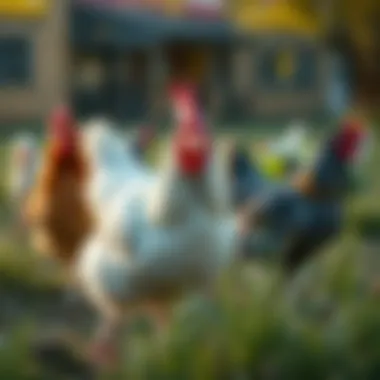
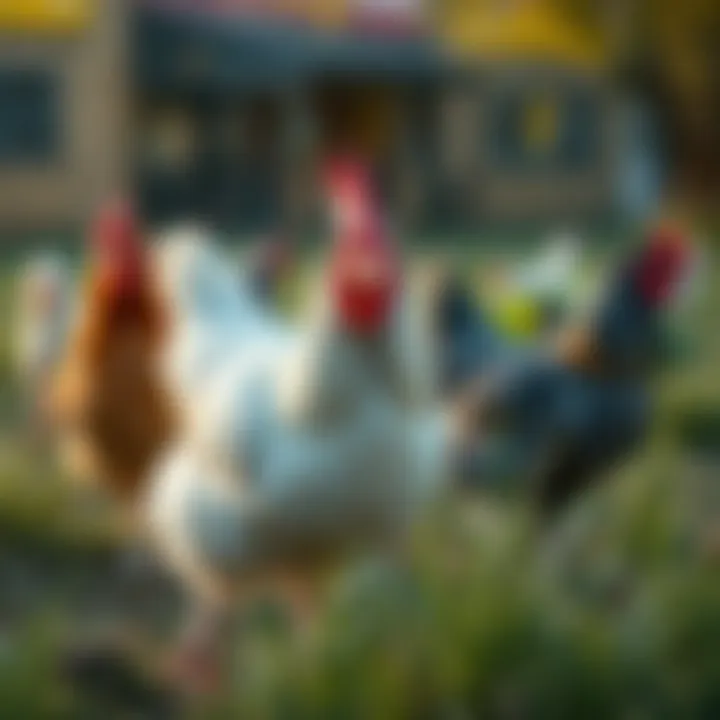
Intro
The landscape of poultry farming in the UK has undergone a notable transformation in recent years, with an increasing spotlight on the practices surrounding free range chickens. This rise in concern is tied to a growing awareness of animal welfare, environmental sustainability, and a quest for nutritionally sound food sources. Consumers now face choices that go beyond just picking a packet of chicken from the supermarket shelf; they must navigate the maze of labels and certifications that promise ethical and responsible production.
As the conversation around free range chicken unfolds, it becomes imperative to understand what the term truly encompasses. Not all free range chickens are created equal, and the differences can lead to a significant impact on both the animal's quality of life and the end product that graces our dining tables. This article will delve deep into various facets of free range chicken production, exploring its implications and presenting a coherent narrative that offers valuable insights for consumers.
We will look at animal welfare standards, environmental considerations, and even nutritional benefits associated with free range chickens. Additionally, we will familiarize you with the regulations that farmers must adhere to and how these affect the quality of life for the chickens involved in the production process. In doing so, our aim is to equip you with the knowledge to make informed decisions, empowering you to choose wisely in today’s marketplace.
Intro to Free Range Chicken
In recent years, the term free range chicken has gained significant traction among consumers, and for good reason. In the UK, it signifies a commitment to higher standards of animal welfare, offering a distinct alternative to conventional poultry farming. Understanding this topic is crucial not just for those who buy chicken but for anyone concerned about ethical food sourcing and environmental stewardship. This article endeavors to dissect the complexities associated with free range chicken, covering its numerous benefits and the considerations inherent within this farming model.
Defining Free Range Chicken
So, what exactly does free range mean in the context of chicken farming? Simply put, it refers to a production system that allows hens access to the outdoors for at least part of the day. The specifics can vary, but generally, free range chickens tend to have more space and a better quality of life compared to their caged counterparts. In the UK, regulatory definitions mandate that hens can roam freely; however, it is essential to note that the size of outdoor space and the duration of access can vary, which can influence both welfare and quality ultimately.
"Access to the outdoors doesn’t just benefit the birds physically; it also enables them to behave more naturally. They scratch, peck, and try to find insects—activities vital for their well-being."
Such a lifestyle often leads to healthier chickens and, consequently, potentially better-tasting meat. The freedom to roam, peck, and forage plays into a natural diet that has implications for both the texture and flavor of the meat produced.
Historical Context in the UK
The free range movement in the UK didn’t happen overnight and has quite a narrative behind it. Traditionally, chickens were often kept in more confined setups—think cramped cages and fewer outdoor experiences. However, starting from the 1970s and picking up speed through the 1990s, there was a noticeable shift in consumer attitudes. Public concern about animal welfare began to bubble up, making waves not only among consumers but also among policymakers.
Legislation started changing in response to this growing awareness, leading to the establishment of formal standards for free range chicken farming. As people became more educated about food origins, many sought out options that aligned both with their ethical values and their tastes.
Now, free range chicken is not just a niche market but a vital component of a broader movement advocating for animal rights and sustainable agriculture. This historical context illustrates how consumer demand can reshape industry practices—a narrative that continues to evolve as the public becomes more discerning.
Regulations Governing Free Range Practices
Understanding the regulations pertaining to free range chicken practices is essential. These guidelines play a crucial role in ensuring that the chickens live in conditions that align with consumer expectations regarding welfare and sustainability. Navigating through the complexities of these regulations can clarify what consumers are really buying when they choose free range as well as ensuring farmers adhere to high standards.
UK Standards for Free Range Farming
In the UK, distinct standards govern how free range chickens are raised. According to the RSPCA's Freedom Food scheme, the label signifies that chickens must be allowed outdoor access. Additionally, the Housing must meet essential requirements; generally, the chickens must have a minimum of approximately 4 square meters per bird in outdoor access. This ensures that chickens can roam freely and engage in natural behaviors.
A few key features of the UK Standards include:
- Outdoor Access: Chickens are not just cooped up; they need real, unrestricted access to the outdoors at all times during their lives.
- Stocking Density: The regulations also set limits on the number of chickens per square meter indoors, which benefits their overall health. It’s not just about cramming them in to raise numbers; it’s about quality of life.
- Feed Requirements: Chickens must be provided a natural diet, often supplemented with grains and protein sources, to ensure optimal health and growth.
In summary, the UK standards emphasize animal welfare, requiring adequate space and access to the outdoors, thereby helping both the farmer's reputation and the consumers' trust in the quality of the meat they buy.
EU Regulations and Their Impact
The EU has laid out important frameworks that shape the conditions under which free range chicken farming operates across its member states. These regulations, though they can often differ slightly from UK standards, commonly prioritize animal welfare and improve the quality of poultry farming.
One notable regulation is EU Council Directive 1999/74/EC, which sets minimum standards for the protection of laying hens. While this directive is primarily for egg-laying hens, it also influences how free range meat chickens are raised due to a ripple effect in farming practices.
Key aspects of EU regulations include:
- Appropriate Living Conditions: Farmers must provide adequate space that allows chickens to live comfortably, exercising their natural behaviors.
- Health Monitoring Systems: Regular checks are mandated to ensure that the chickens are free from disease and that the overall farm environment remains safe.
- Sustainability Practices: The regulations advocate for methods that favor environmental health, for example, by reducing chemical inputs.
"A direct consequence of these regulations is better standardized practices, ensuring higher consumer confidence and a healthier product."
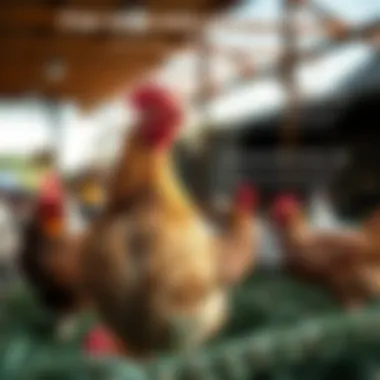
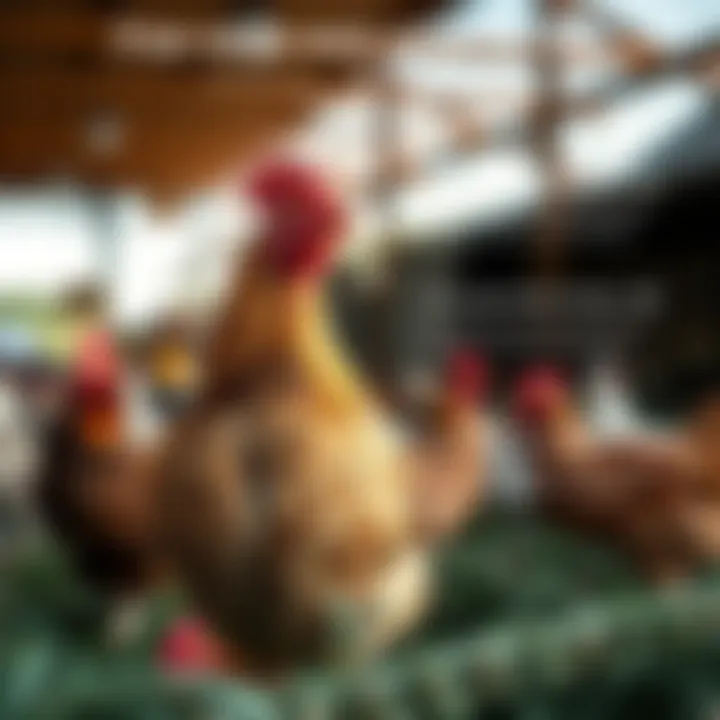
As the UK has left the EU, there are discussions about how these regulations may evolve in the future. Both farmers and consumers are closely watching these movements, as changes in regulations could have long-lasting consequences for how free range chicken is produced and marketed.
With the blend of UK standards and EU regulations, it's apparent that both the welfare of the chickens and the ethical considerations of purchasing them are front and center. This not only ensures consumer confidence but also leads to more conscientious farming practices as the industry moves forward.
Differences Between Free Range and Conventional Farming
Understanding the differences between free range and conventional farming is crucial, especially in the context of consumer choices in the UK. This knowledge can significantly inform purchasing decisions, leading to a more ethical way of consuming poultry. Free range systems prioritize the welfare of chickens, allowing them both space and freedom to exhibit natural behaviors. The contrast with conventional methods, which often confine birds to cramped spaces, raises important questions regarding animal welfare, food quality, and environmental impact.
Animal Welfare Considerations
Animal welfare is at the heart of the debate between free range and conventional farming. In conventional setups, chickens are typically housed in large flocks within confined spaces, like battery cages or intensive setups, restricting their movement and ability to roam around simply. This confinement can lead to stress and aggression between the birds, influencing their overall health and well-being.
In contrast, free range systems enable chickens to engage in a variety of natural behaviors, such as scratching, pecking, and basking in sunlight. They are offered access to outdoor areas, where they can choose to interact with their environment as they see fit. The increased welfare in free range systems can translate into healthier birds.
Research has shown that chickens raised in free range conditions tend to have better immune systems and lower rates of disease. Moreover, studies suggest that the reduced stress levels among free range chickens often result in better meat quality, which is another aspect consumers are starting to value.
"The welfare of poultry on free range farms is not just an ethical consideration; it's a matter of providing consumers with a more wholesome product."
Environmental Impact Comparison
The environmental implications of poultry farming are another crucial area of difference between free range and conventional systems. Conventional farming practices often lead to higher concentrations of waste in localized areas. This can cause soil degradation and water pollution, primarily due to runoff containing high levels of nitrogen and phosphorus.
Free range farms, while still unlikely to be perfect, often adopt more sustainable practices. The mobility of free range birds allows them to naturally fertilize the land, which can promote healthier soil. In addition to this, the rotational grazing method utilized by some free range farms helps to manage pasture health and reduce the risk of parasitic infections in birds.
Economically, while free range systems may require more land and initial investment, they can yield benefits in the long term. Healthier ecosystems and improved animal conditions not only support biodiversity but also contribute to the resilience of farming practices.
Nutritional Aspects of Free Range Chicken
The nutritional profile of free range chicken is pivotal not only for consumers seeking healthier options but also for understanding the broader implications of how poultry is raised. These aspects illuminate the complexities involved in producing meat that is not only ethically sourced but also beneficial for human consumption. Consumers today are increasingly mindful of the foods they consume, leaning toward free range options that promise better quality with respect to both animal welfare and the nutritional content of the meat.
Comparative Nutritional Value
Free range chicken often boasts a comparative edge over its conventionally raised counterparts in terms of nutritional value. Studies indicate that free range chickens typically have a richer nutrient profile. For instance, free range chicken is observed to have higher levels of omega-3 fatty acids, thanks to the chickens’ varied diet which includes plants, insects, and other natural forage. This not only supports the health of the chickens but also enhances the nutritional quality of the meat.
Additionally, free range chicken tends to have lower saturated fat content. This can be attributed to the physical activity the birds enjoy while roaming outdoors. A meat that contains lesser saturated fat can be pivotal for tackling health issues related to heart diseases and obesity. In terms of vitamins and minerals, free range chicken often surpasses conventional poultry by offering greater amounts of vitamin A and E, which are crucial for various bodily functions including vision and immune health.
- Higher Omega-3 fatty acids: Supports cardiovascular health.
- Lower levels of saturated fats: Promotes healthier fat consumption.
- Increased vitamins A and E: Beneficial for vision and immunity.
"Nutrition doesn't come from a package; it comes from nature."
Factors Influencing Meat Quality
The quality of meat from free range chicken hinges on several interconnected factors. First and foremost, the chickens’ diet plays a monumental role in defining the taste and nutritional content of the meat. No two farms may have identical feeding regimes, which results in varied flavor profiles; some may even report a more robust, natural taste when compared to chicken sourced from intensive farming systems.
Moreover, the living conditions of free range chickens cannot be overlooked. Chickens that are allowed to roam freely in spacious areas exhibit less stress, which subsequently impacts the texture and flavor of the meat. Stress-free animals often result in better quality meat. Also, the method of slaughter can influence the quality, as techniques that reduce stress lead to superior flavor and texture.
When considering cooking methods, preparation techniques like slow roasting can help in retaining moisture and enhancing flavor, making the most out of the chicken’s innate qualities.
Also, the overall lifecycle and health of the chickens prior to slaughter further improve the quality of the meat, making it more nutritious and appealing to consumers looking for sustainable options.
On the consumer front, understanding these factors can help individuals make more informed choices when selecting chicken, especially at the grocery store or farmers' markets where transparency about farming practices is more prevalent.
Consumer Perception and Market Trends
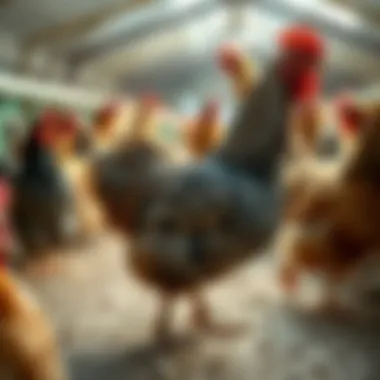
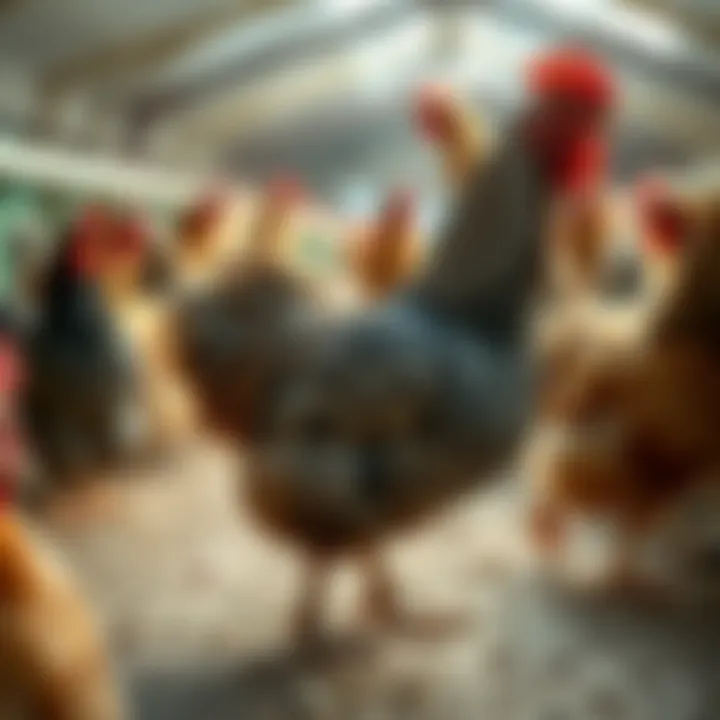
Understanding consumer perception of free range chicken is pivotal in grasping its growing prominence within the UK market. This section explores the factors influencing consumer behavior and the shifting trends that illuminate how the public views free range products. Awareness of these trends and perceptions not only affects purchasing patterns but also shapes the entire industry, from production methods to marketing strategies.
Rising Demand for Free Range Products
In recent years, a notable surge in demand for free range chicken has been observed across the United Kingdom. Consumers are increasingly prioritizing ethical considerations when making food choices, reflecting a broader societal shift towards transparency in food sourcing. Factors contributing to this rising demand include:
- Health Consciousness: Many buyers believe that free range chicken is healthier than conventionally farmed options. Perceptions of better nutritional profiles and reduced exposure to antibiotics play a significant part in consumer decisions.
- Animal Welfare Concerns: A growing segment of the population values chicken raised in humane conditions. Animal welfare is a hot topic; consumers engage more with brands that demonstrate care and responsibility towards their livestock.
- Sustainability Awareness: Environmental impact concerns have made consumers more selective. Free range farming practices, which are often viewed as less damaging to the environment, resonate with eco-conscious shoppers.
- Local Sourcing Trends: There is also an uptick in preference for locally sourced products, further driving demand for free range options raised close to home.
Be it through labels or recommendations, these preferences are shaping market dynamics significantly. Brands must cater to this rising demand or risk being left behind in a market that is redefining consumer expectations.
"In a world where consumers are more informed than ever, ignoring the demand for humane and sustainable practices is no longer an option for poultry farmers."
Socio-Economic Influences on Buying Choices
Purchasing decisions regarding free range chicken are not made in a vacuum. Several socio-economic factors play a crucial role. These include:
- Income Level: Higher-income households are often more willing to spend on premium products like free range chicken. Economic capability can heavily influence whether a family opts for quality over quantity.
- Education Level: Educated consumers tend to prioritize nutritional knowledge and ethical implications, leading them toward free range options.
- Cultural Trends: As society evolves, so do dietary philosophies. Cultural movements advocating for cruelty-free and environmentally responsible food sources boost the allure of free range chicken.
- Marketing and Advertising: Effective campaigns that center on the story behind free range products resonate with consumers. Marketing that highlights ethical standards can sway buying behavior positively.
In sum, the factors intertwining consumer perception and socio-economic realities weave a complex web that shapes the landscape of free range chicken in the UK. As more consumers choose to invest in humane and sustainable products, the implications ripple through every facet of the industry.
Challenges in Free Range Chicken Production
Producing free range chicken is not all sunshine and rainbows. While it inspires visions of happy chickens pecking about in wide-open fields, the reality is that there are notable challenges producers must grapple with. These challenges carry weight not only for the farmers but also for consumers and animal welfare advocates.
Health Risks and Disease Management
One of the foremost concerns in free range chicken farming is health risks. Chickens in free range systems face exposure to a host of pathogens that they might not encounter in more confined environments. For example, access to the outdoors increases their chance of contact with wild birds, which can carry avian influenza and other diseases. Given that these chickens roam free, managing disease outbreaks becomes a tougher nut to crack.
Farmers must implement proactive strategies that often require more resources. Regular health checks, vaccination programs, and biosecurity measures are crucial. Biosecurity can include fencing to keep wildlife out and protocols for washing equipment used in both the free range areas and standard poultry houses. While these measures can incur additional costs, they are aimed at protecting the overall health of the flock. A healthy chicken is not just vital for production; it also ensures consumer safety, as a healthier bird leads to fewer chances of contamination in the meat.
"When chickens are free to roam, managing their health is like walking a tightrope—one misstep can topple the entire operation."
Moreover, chickens in free range environments may experience different stressors compared to their caged counterparts. Stress can lead to lowered immunity, making the birds more susceptible to illness. It's like the saying goes—stress is a silent killer.
Economic Viability for Farmers
Turning a profit from free range chicken production can be as slippery as an eel. The economic viability of this farming practice is often questioned. The costs associated with maintaining a free range environment are typically higher compared to conventional methods.
For starters, feed costs can go up due to the need to supplement the diet while giving them access to forage. Plus, there are additional overheads in terms of land, fencing, and infrastructure to protect the chickens from external threats. In the face of fluctuating market prices, these expenses can put a significant pinch on a farmer’s profit margins.
To maintain profitability, many free range producers must adapt their business models. This might involve embracing local markets and direct sales, where they can command a higher price for their product, justifying the added costs. Some farmers find success in creating niche brands that emphasize animal welfare and sustainable practices, thereby appealing to conscientious consumers.
However, recognizing that consumer demand is shifting is key. Many buyers are willing to pay a premium for free range products. The challenge lies in effectively communicating the differences and benefits of free range chicken to a market often swamped with choices.
In summary, while the allure of free range chicken farming is enticing from an animal welfare perspective, it comes with a bag of challenges that must be navigated thoughtfully. Health risks need constant attention, and economic viability requires savvy business practices and consumer education to thrive. In the end, achieving balance between profit and ethical farming is a delicate dance.
Ethical Considerations in Poultry Farming
In the evolving landscape of poultry farming, ethical considerations hold considerable sway over public discourse. The shift towards free range practices isn't merely a trend; it's a reflection of deepening concerns around animal welfare, environmental sustainability, and the transparent dynamics of consumer choices. To resonate with an audience that deeply values the welfare of animals, a nuanced understanding of these ethical considerations becomes paramount.
Balancing Animal Rights and Consumer Demand
As the conversation around free range chicken gains momentum, there's a pressing need to strike a balance between animal rights and consumer demand. On one side, there are the advocates who argue fiercely for the humane treatment of animals, emphasizing that chickens should have access to the outdoors, ample space, and a natural diet.
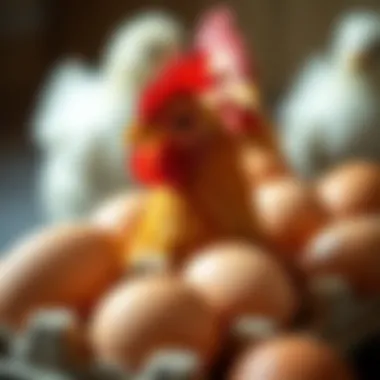
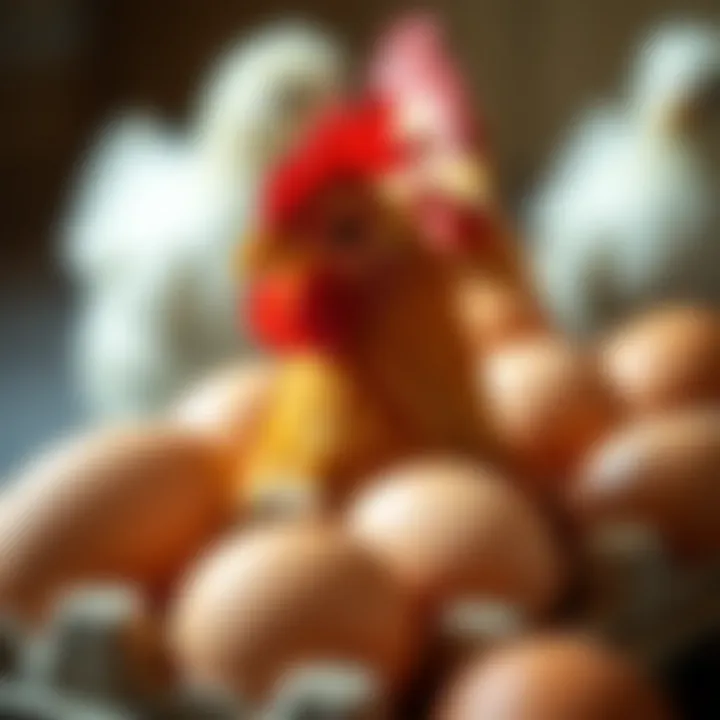
Strengthened by emotional appeals, this perspective often highlights the appalling conditions found in traditional farming methods, where overcrowding and health risks are rampant. Here’s why the balance is challenging:
- Consumer Expectations: Many consumers now seek out ethical options, fully aware that how their food is sourced matters. This awareness is changing the market dramatically.
- Economic Realities: Farmers, while eager to meet these ethical demands, also face economic pressures. Not all consumers are willing to pay a premium for free range products, making it tough for some farmers to adapt without financial risk.
Maintaining a dialogue about the inherent value of animal welfare alongside the economic realities of farming ensures that the industry can evolve without veering into extremes where animal rights violations or economic collapse occurs.
The Role of Certifications and Labels
Certifications and labeling play a crucial role in informing consumers about the ethical standards of poultry farming. When a product is labeled as 'free range', it carries with it an implicit promise of better welfare standards and can significantly influence buying patterns. Let’s break it down:
- Trust and Transparency: Certifications like the RSPCA Assured or Soil Association Organic help consumers navigate the murky waters of poultry farming. These labels assure the public that the product meets specific guidelines regarding animal treatment and environmental standards.
- Market Differentiation: For farmers, these certifications can serve as unique selling points, enhancing the appeal of their products to conscientious consumers who may prioritize animal welfare in their purchasing choices.
- Consumer Education: Labels also become educational tools, helping buyers to understand what lies behind the buzzwords. This means they are not just buying based on marketing claims but are informed of the practices involved in their food production.
Getting these certifications right isn't just a matter of meeting standards—it's about building a relationship of respect and trust with consumers who increasingly value transparency.
"As consumers demand more sustainable and ethically produced food, the poultry industry must respond accordingly, integrating animal welfare into their business models to stay relevant."
Future of Free Range Chicken in the UK
The future of free range chicken farming in the UK is not just a matter of how farmers operate; it’s also tied to broader trends that encompass consumer preferences, environmental sustainability, and technological advancements. As awareness grows around animal welfare and food sourcing, the conversations around free range chicken become increasingly significant. Understanding what lies ahead in this sector can equip consumers to make informed choices while encouraging producers to adopt practices that align with changing expectations.
Innovations in Farming Practices
Innovation plays a critical role in the evolution of free range chicken farming. Farmers are adopting a variety of new practices designed to enhance animal welfare and operational efficiency. For instance, the use of automated feeding systems helps ensure that birds receive the right nutrition without the need for human oversight, allowing more focus on their living conditions.
Another noteworthy advancement is the integration of environmentally friendly technology in poultry housing. Innovations like mobile chicken coops, which allow birds to access fresh pasture while preventing overgrazing, promote a healthier ecosystem. This type of rotational grazing not only benefits the chickens' health but also enhances the soil quality, leading to a more sustainable farming approach.
Moreover, the application of data analytics has become prevalent. Farmers can monitor the health and behavior of their flocks through sensors and cameras, ensuring early detection of potential health issues, thus improving overall animal welfare.
"As technology melds with traditional farming, a future emerges that prioritizes both animal welfare and ecological sustainability in free range practices."
Predictions for Market Evolution
As the market for free range chicken continues to grow, several key trends are likely to shape its development. Firstly, consumers are becoming more discerning. They want to know where their food comes from and how it’s produced. As awareness of ethical farming practices rises, it’s reasonable to expect that demand for free range chicken will keep climbing.
Economic factors also come into play. As the general public becomes more educated about the quality and health advantages associated with free range products, there may be a shift in spending habits, with consumers willing to pay a premium for ethically sourced chicken. It's not just about taste or texture anymore; it’s about values and making choices that resonate with personal ethics.
Furthermore, regulatory pressures might drive innovation and expansion. With the UK government placing increasing emphasis on animal welfare and sustainability, regulations will likely tighten. However, this can also foster a more vibrant market, ensuring that farmers meet high standards while rewarding those who exceed them.
In summary, the future of free range chicken in the UK is poised to embrace innovations and adapt to changing consumer demands and regulatory landscapes. By staying ahead of these trends, both producers and consumers can contribute to a more ethical and sustainable food system.
For more information on sustainable chicken farming, check out resources from The Soil Association and The British Free Range Egg Producers Association.
Finale
The discussion around free range chicken in the UK serves as a lens to examine broader themes of animal welfare, sustainability, and consumer choice. With each point made throughout this article, we've unraveled how such farming practices not only benefit the chickens but also respond to the expectations of a more thoughtful consumer base.
Summary of Key Insights
In tracing the journey from the farm to the consumer's plate, we’ve discovered several key takeaways:
- Animal Welfare Focus: Free range practices prioritize the well-being of birds, providing them with the freedom to roam and engage in natural behaviors, which is shown to enhance their quality of life.
- Nutritional Benefits: Studies indicate that free range chicken often contains a higher nutritional value than conventional chicken, influenced by their diverse diet of greens, insects, and other natural forage.
- Sustainability Matters: The environmental impact of free range farming practices tends to be more favorable compared to intensive farming systems, as they generally promote better soil health and biodiversity.
- Consumer Awareness: Increasing demand for ethically sourced, high-quality meat signals a shift in consumer preferences, driving industries towards more humane practices. This trend places pressure on producers to adopt more transparent and ethical practices.
"More than just a meal, free range chicken represents a choice for responsible consumption—one that acknowledges the interconnections between food, ethics, and health."
Final Thoughts on Responsible Consumption
As consumers, our choices carry weight. Opting for free range chicken is an avenue to support agricultural practices that align with personal values surrounding animal welfare and environmental health. In this era, where information is at our fingertips, being an informed consumer isn't just advantageous; it's necessary.
By recognizing the implications of our food choices, we become active participants in shaping the future of poultry farming in the UK. The collective power of decisions made at the dinner table can push agriculture into a more humane and sustainable future. Thus, understanding free range chicken isn’t merely about the product but involves engaging with the ethical, environmental, and nutritional complexities that accompany our consumption.















